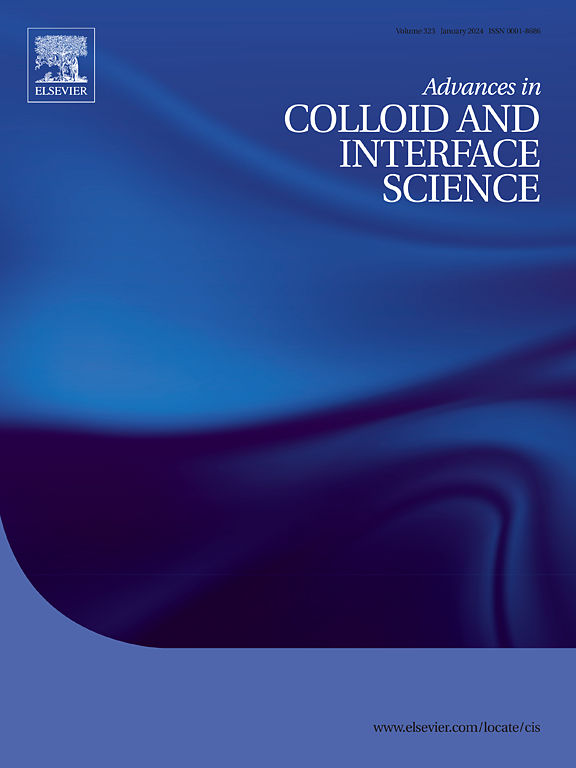Review of gold-ligand interactions: Implications for metallurgical processes and nanoparticle synthesis
IF 19.3
1区 化学
Q1 CHEMISTRY, PHYSICAL
引用次数: 0
Abstract
Gold, essential in both metallurgical extraction and nanoparticle-based technologies, plays a central role in catalysis, sensing and biomedicine. Its interactions with organic ligands are critical for efficient gold recovery through flotation and leaching as well as for synthesizing gold nanoparticles. These interactions, primarily governed by anchoring atoms, sulfur, nitrogen, phosphorus, oxygen, and carbon, define the strength, geometry and selectivity of the gold-ligand interface. This review evaluates how each anchoring atom affects adsorption mechanisms, including chemisorption, donor-acceptor interactions and dispersive forces in metallurgical and nanoparticle contexts. Sulfur-based ligands, essential in flotation and leaching, form strong Au![]() S bonds at high-coordination atop/hollow sites or undercoordinated adatoms, modulated by redox conditions. Nitrogen-based ligands, less effective in extraction, are vital in nanoparticle synthesis due to selective binding to gold adatoms. Phosphorus-based ligands, weaker in extraction, hold promise for nanoparticle engineering, leveraging electronic and steric properties. Oxygen-anchoring ligands with weak Au
S bonds at high-coordination atop/hollow sites or undercoordinated adatoms, modulated by redox conditions. Nitrogen-based ligands, less effective in extraction, are vital in nanoparticle synthesis due to selective binding to gold adatoms. Phosphorus-based ligands, weaker in extraction, hold promise for nanoparticle engineering, leveraging electronic and steric properties. Oxygen-anchoring ligands with weak Au![]() O interactions have limited relevance in extraction but stabilize nanoparticles via multidentate and non-covalent interactions. Carbon-based ligands, especially N-heterocyclic carbenes, create highly stable Au
O interactions have limited relevance in extraction but stabilize nanoparticles via multidentate and non-covalent interactions. Carbon-based ligands, especially N-heterocyclic carbenes, create highly stable Au![]() C bonds, crucial for nanoparticle synthesis despite limited extraction use. The review advocates an interdisciplinary approach to advance fundamental understanding and practical applications of gold technologies. Bridging metallurgical and colloidal-interface perspectives provides valuable insights for improving gold recovery methods and developing innovative gold-based nanomaterials for diverse advanced applications.
C bonds, crucial for nanoparticle synthesis despite limited extraction use. The review advocates an interdisciplinary approach to advance fundamental understanding and practical applications of gold technologies. Bridging metallurgical and colloidal-interface perspectives provides valuable insights for improving gold recovery methods and developing innovative gold-based nanomaterials for diverse advanced applications.

金配体相互作用的综述:对冶金工艺和纳米颗粒合成的影响
金在冶金提取和纳米颗粒技术中都是必不可少的,在催化、传感和生物医学中起着核心作用。它与有机配体的相互作用对于通过浮选和浸出高效回收金以及合成金纳米粒子至关重要。这些主要由锚定原子、硫、氮、磷、氧和碳控制的相互作用决定了金配体界面的强度、几何形状和选择性。这篇综述评估了每个锚定原子如何影响吸附机制,包括化学吸附、供体-受体相互作用和在冶金和纳米颗粒环境下的分散力。硫基配体在浮选和浸出中至关重要,在高配位的顶部/空心位点或低配位的配体上形成强的au键,由氧化还原条件调节。氮基配体萃取效率较低,但由于与金原子的选择性结合,在纳米颗粒合成中至关重要。磷基配体,较弱的萃取,有希望在纳米粒子工程,利用电子和空间性质。具有弱AuO相互作用的氧锚定配体与萃取的相关性有限,但通过多齿状和非共价相互作用稳定纳米颗粒。碳基配体,特别是n-杂环碳烯,可以产生高度稳定的AuC键,尽管萃取应用有限,但对于纳米颗粒合成至关重要。该评论提倡跨学科的方法来推进基本的理解和黄金技术的实际应用。桥接冶金和胶体界面的观点为改进金回收方法和开发创新的金基纳米材料的各种先进应用提供了有价值的见解。
本文章由计算机程序翻译,如有差异,请以英文原文为准。
求助全文
约1分钟内获得全文
求助全文
来源期刊
CiteScore
28.50
自引率
2.60%
发文量
175
审稿时长
31 days
期刊介绍:
"Advances in Colloid and Interface Science" is an international journal that focuses on experimental and theoretical developments in interfacial and colloidal phenomena. The journal covers a wide range of disciplines including biology, chemistry, physics, and technology.
The journal accepts review articles on any topic within the scope of colloid and interface science. These articles should provide an in-depth analysis of the subject matter, offering a critical review of the current state of the field. The author's informed opinion on the topic should also be included. The manuscript should compare and contrast ideas found in the reviewed literature and address the limitations of these ideas.
Typically, the articles published in this journal are written by recognized experts in the field.

 求助内容:
求助内容: 应助结果提醒方式:
应助结果提醒方式:


